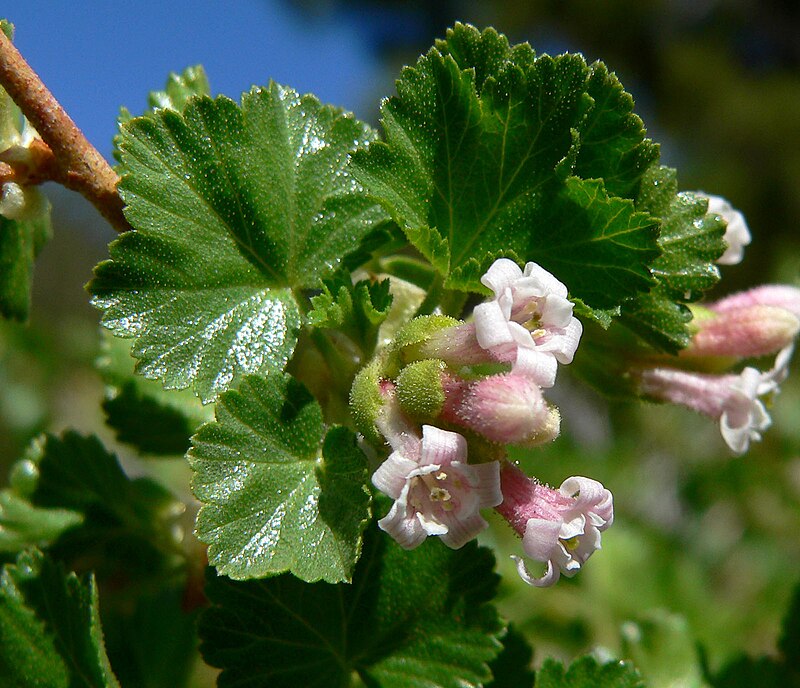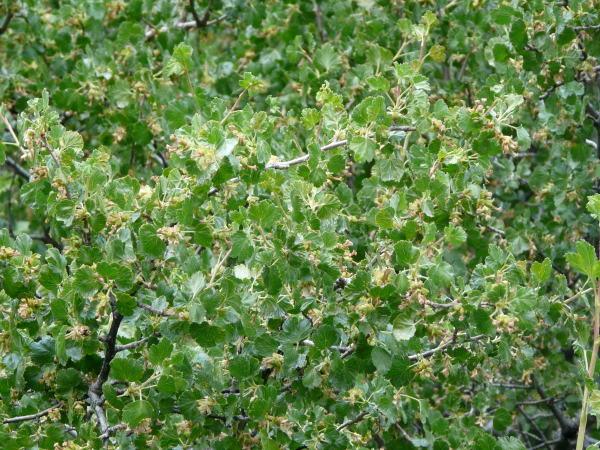Wax Currant: The Sweet Fragrant Berry That's
Wax currant (Ribes cereum) is a North American native shrub that is known for its sweet, fragrant berries. The berries are a deep purple-black color and have a slightly tart taste. They are often used in jellies, jams, and pies.
Wax currant shrubs can grow up to 6 feet tall and have a spreading habit. They are hardy in USDA zones 3-8 and prefer full sun to partial shade. The shrubs bloom in the spring with clusters of white flowers. The berries ripen in the summer.
In addition to their culinary uses, wax currant berries have a number of health benefits. They are a good source of antioxidants, vitamins, and minerals. They are also said to help boost the immune system and improve heart health.
Wax currant shrubs are relatively easy to care for. They need regular watering, especially during the summer months. They should be fertilized in the spring with a balanced fertilizer. Wax currant shrubs are relatively pest- and disease-free.
If you are looking for a delicious and healthy berry to add to your diet, then wax currant is a great option. The shrubs are easy to grow and care for, and the berries are versatile in the kitchen.
Main Content
History and Uses
Wax currant has been used by Native Americans for centuries. The berries were eaten fresh, dried, or made into pemmican. The wood of the shrub was also used to make arrow shafts and other tools.
In the early 1900s, wax currant became popular as a garden plant. The berries were used in jellies, jams, and pies. The shrubs were also planted as ornamentals because of their fragrant flowers.
Today, wax currant is still grown for its berries and ornamental value. The berries are a popular ingredient in jams, jellies, and pies. The shrubs are also planted as ornamentals because of their fragrant flowers.
Health Benefits
Wax currant berries are a good source of antioxidants, vitamins, and minerals. They are especially high in vitamin C, which is an important antioxidant that helps protect the body against damage from free radicals. Wax currant berries also contain vitamin A, potassium, and magnesium.
The antioxidants in wax currant berries may help boost the immune system and protect against cancer. The berries may also help improve heart health by lowering cholesterol levels and reducing inflammation.
How to Grow and Care for Wax Currant
Wax currant shrubs are relatively easy to grow and care for. They prefer full sun to partial shade and well-drained soil. The shrubs need regular watering, especially during the summer months. They should be fertilized in the spring with a balanced fertilizer.
Wax currant shrubs are relatively pest- and disease-free. However, they may be susceptible to aphids and scale insects. If you see any pests on your shrubs, you can remove them by hand or with insecticidal soap.
Recipes
Wax currant berries can be used in a variety of recipes. Here are a few ideas:
- Wax Currant Jam: This jam is a delicious way to enjoy the flavor of wax currant berries. To make it, simply combine equal amounts of wax currant berries and sugar in a saucepan. Bring the mixture to a boil, then reduce the heat and simmer for 20 minutes, or until the jam has thickened.
- Wax Currant Pie: This pie is a classic way to enjoy wax currant berries. To make it, combine wax currant berries with sugar, flour, and spices in a pie crust. Bake the pie at 375 degrees Fahrenheit for 45 minutes, or until the crust is golden brown and the filling is bubbling.
- Wax Currant Shrub: This shrub is a refreshing way to enjoy the flavor of wax currant berries. To make it, combine equal amounts of wax currant berries and sugar in a jar. Add enough water to cover the berries. Let the mixture sit for 2-3 weeks, then strain it. The shrub can be served over ice or used in cocktails.
Conclusion
Wax currant is a delicious and healthy berry that is easy to grow and care for. The berries can be used in a variety of recipes, or they can be enjoyed fresh. If you are looking for a new berry to add to your diet, then wax currant is a great option.
Wax currant is a beautiful and versatile shrub that can be found in a variety of habitats. It is known for its fragrant flowers, edible berries, and sticky leaves. If you are interested in learning more about wax currant, I recommend visiting the Garden Wiki. This website has a wealth of information about wax currant, including its range, habitat, morphology, and uses.
In addition to providing comprehensive information about wax currant, the website also features beautiful photographs of the shrub. These photographs will help you to identify wax currant in the wild. The website also includes a discussion forum where you can ask questions and share your experiences with wax currant.
I hope you will visit the Garden Wiki to learn more about wax currant. It is a fascinating shrub that is sure to capture your interest.
FAQ of wax currant
5 Most Frequently Asked Questions About Wax Currant
Wax currant (Ribes cereum) is a native North American shrub that is known for its edible berries, fragrant flowers, and ornamental foliage. It is a member of the gooseberry family, and it is closely related to currants and gooseberries.
Here are the 5 most frequently asked questions about wax currant, along with valuable insights and solutions:
Question 1: What is wax currant?
Answer: Wax currant is a deciduous shrub that grows 1.65 to 4.95 feet (0.5 to 1.5 meters) tall. It has smooth, grayish-brown bark and dark green, oval leaves that are 1 to 2 inches (2.5 to 5 centimeters) long. The flowers are white or pink and are produced in clusters in early spring. The berries are red or black and are about 0.25 inches (0.6 centimeters) in diameter.
Question 2: What are the benefits of wax currant?
Answer: Wax currant has a number of health benefits. The berries are a good source of vitamin C, potassium, and fiber. They also contain antioxidants that can help protect the body against damage from free radicals. The leaves of wax currant can be used to make a tea that is said to have anti-inflammatory and diuretic properties.
Question 3: How do I grow wax currant?
Answer: Wax currant is easy to grow in most parts of the United States. It prefers full sun and well-drained soil. It is a hardy shrub that can tolerate a wide range of temperatures. Wax currant can be propagated from seed or from cuttings.
Question 4: How do I care for wax currant?
Answer: Wax currant is a low-maintenance shrub. It does not require much fertilizer or water. It is important to prune wax currant regularly to keep it from becoming overgrown.
Question 5: What are some common problems with wax currant?
Answer: The most common problems with wax currant are aphids, spider mites, and powdery mildew. Aphids can be controlled with insecticidal soap or neem oil. Spider mites can be controlled by increasing the humidity around the plant. Powdery mildew can be controlled by using a fungicide.
Image of wax currant
- Image 1: A close-up of a cluster of wax currant berries. The berries are small and round, with a waxy coating. They are a deep red color.
- Image 2: A branch of a wax currant shrub. The shrub is covered in small, green leaves. The berries are just starting to ripen, and they are a light pink color.
- Image 3: A wax currant flower. The flower is small and white, with five petals. It has a sweet fragrance.

- Image 4: A wax currant leaf. The leaf is oval-shaped, with a serrated edge. It is a dark green color.
- Image 5: A wax currant plant in its natural habitat. The plant is growing in a forest, and it is surrounded by other shrubs and trees.

Post a Comment for "Wax Currant: The Sweet Fragrant Berry That's"